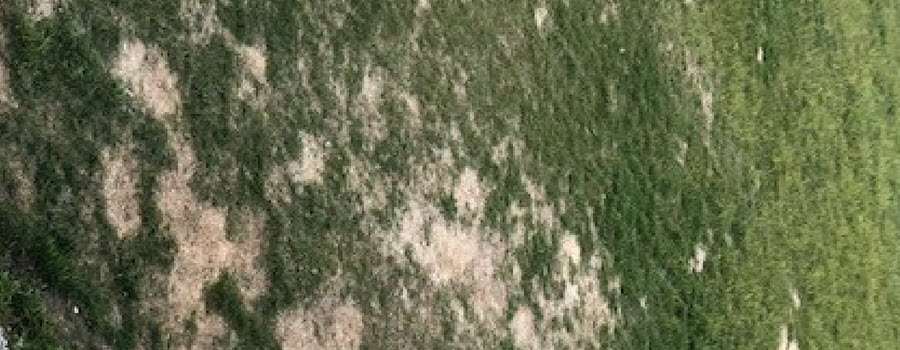From Seed to Lawn: Part 3
- Milorganite AgronomistAugust 18, 2018
The Adventures of One Homeowner
Experiences and lessons learned from starting a new lawn from seed
I had problems installing my new lawn last September. Just after it was seeded, temperatures rose to the low 90s. That’s not supposed to happen in Wisconsin! We had to stay on top of a rigorous watering schedule to get it to germinate and stay alive.
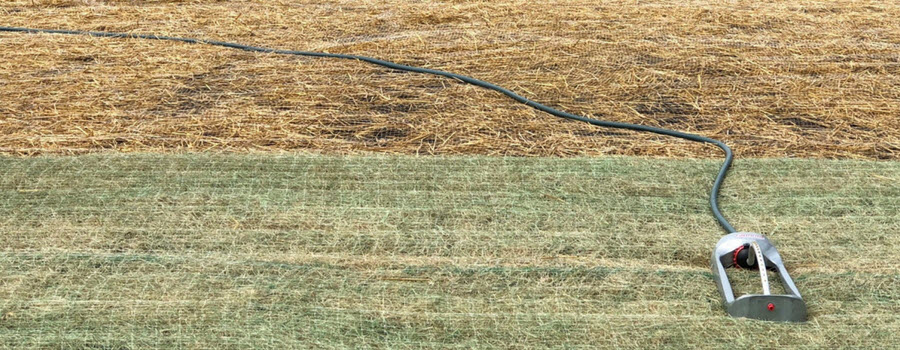
Then we were thrust into winter. Brutal. That’s about the best way I can describe this past winter and spring. We missed the repeated Nor’easters that hit the East Coast, but our winter certainly wasn’t milder—more snow than usual, as well as extreme, unexpected temperature fluctuations. This wasn’t the average winter weather I had hoped for. My newly seeded lawn clung on to survive. It certainly didn’t thrive.
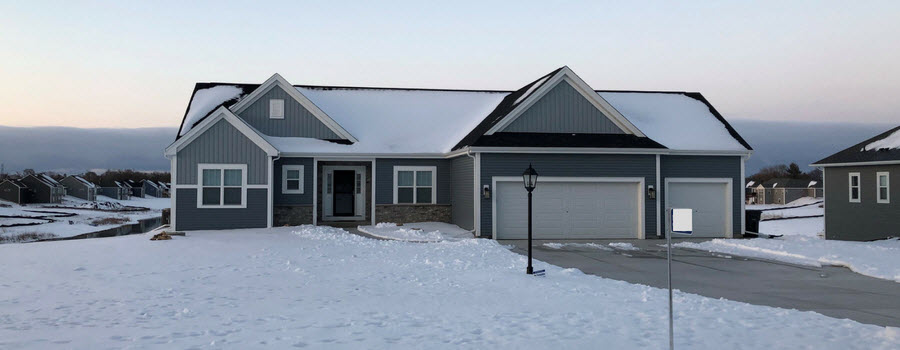
We had a decent amount of rain this spring, which infiltrated the soil and warmed it up, then we’d get hit with more snow! It happened over and over again.
All of this lead to ideal conditions, not for the lawn, but for winter-related lawn problems. I guess I wouldn’t have much to talk about had it been a typical winter. (Is that the bright side?)
The weather nightmare has finally ended.
Establishing a lawn by seed is going to take more than one season. I’ll tell you right off, you’re not going to seed a new lawn in fall and wake up some spring morning to a thick, green lawn. It’s simply not going to happen. Plan on overseeding in both spring and fall over the next 2–3 years.
Shade and Dog Spot
Anyplace that had prolonged periods of shade, which prevented snow from melting, the grass is dead. Wherever there’s dog spot—the brown patches caused by dog urine—the lawn was also killed. These areas will need to be repaired by raking and overseeding.
(dog spots in the lawn)
Diseases
The crazy winter and spring weather created the perfect conditions for lawn diseases: snow cover; wet soil; and/or deep snow cover on the non-frozen ground. Yup, we had them all. There was some grey snow mold, but the lawn grew out of it quickly, which is typical for home lawns.
You can help reduce the impact of grey snow mold by distributing large piles of snow and gently raking the area to help it dry out. Applying excess nitrogen in fall can also encourage gray mold. Use a slow-release, low-nitrogen, fertilizer, such as Milorganite, for fall dormant feeding.
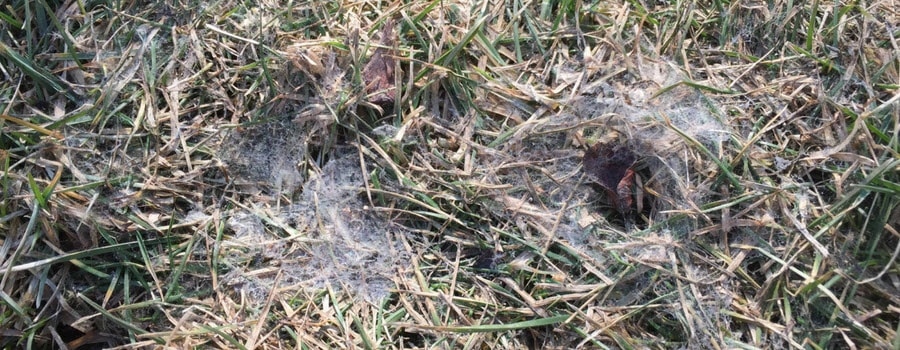
(grey snow mold)
Overseeding
My goal is to thicken-up the lawn with regular overseeding. Spring and fall are both good times to overseed. It helps to improve the density and color of the lawn and, in my case, fill bare patches.
You’ll definitely want to start your new lawn using more than one species of grass. We used a mix of Kentucky bluegrass and ryegrass. This spring I discovered there is a lot of light-green ryegrass with patches or stripes of bluegrass. The lawn isn’t uniform yet and that’s okay, I didn’t expect it to be. It’s possible that the bluegrass didn’t take as well because of the unusually hot temperatures last fall. It could also be that we failed to stay on top of watering, despite our extraordinary efforts. I’m using a bluegrass blend when overseeding to get the overall color I want.
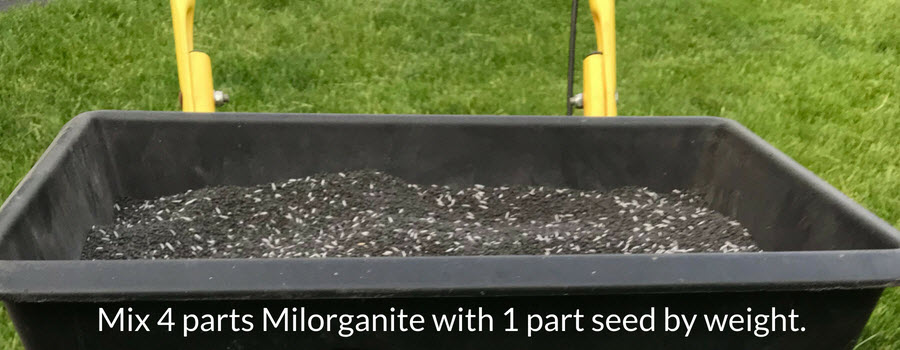
To overseed, by weight, mix four parts Milorganite with one part grass seed that’s right for your climate and distribute using a spreader. You’ll be better able to see where you’re your seeding and it’s a safe fertilizer for newly seeded lawns. It won’t burn new shoots or provide too much nitrogen, which encourages top growth at the expense of the roots.
Weeds
Plan on overseeding for a few years. It not only creates a thicker lawn with consistent color, it’s also the best method of weed control. A thinner lawn and bare spots mean weeds have great places to establish themselves—and they will. My lawn doesn’t have too many weeds right now, but the longer I wait to overseed, I’m sure I’ll see more.
I don’t recommend using an herbicide on the entire lawn to kill weeds, because periodically you’re going to overseed and the herbicide may kill newly germinated grass seed. If you do use an herbicide, you’ll need to wait 4–5 weeks before overseeding. Removing weeds by hand is the best method of getting rid of them, which is what I’ve been doing. Right now, I’m only spot spraying herbicide on the thistles.
Although I typically don’t use herbicides on my entire lawn, I plan to this fall. We have a lot of crabgrass, which was likely mixed in with the grass seed. Another issue, especially in a new residential development, is empty lots, and we have one next door. The weeds flourish and will make their way to our lawn. It’ll be less of a problem when all of the lots are developed. I’m not a fan of weed killers, but in this circumstance, I just want the lawn to fill in and get off to a good start. In time, I’ll get back to only popping out weeds by hand.
Settling
Newly spread soil is going to settle and it did. I now have a few low-lying areas that need to be brought up to grade. I’ll topdress the low-lying areas using a mixture of Milorganite, seed, and topsoil, and rake it level.
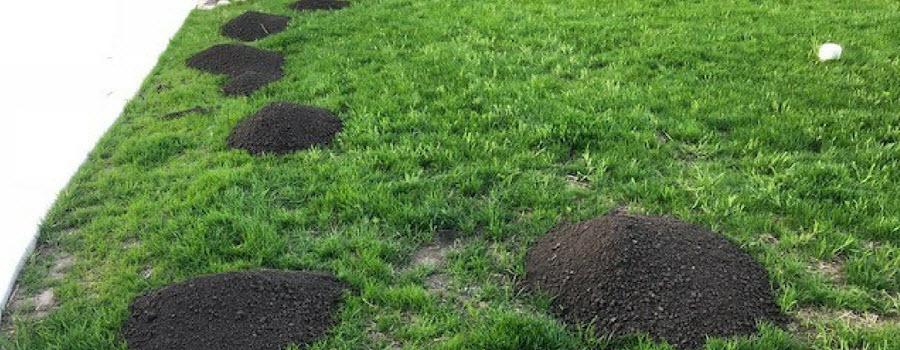
It’s the first spring for my lawn. It looks really good from a distance, but when you look closely, it looks “thin-ish,” which I expected. A newly seeded lawn won’t be lush in just one season. Keep up with overseeding with a grass seed mix that’s best for your area and for how you plan on using your lawn.
I continue to be obsessed with my new lawn.
Part 1 - Budget, Timing, Rough Grade, Seed vs Sod
Part 2 - Final Grade, Topsoil, Seeding, Fertilizing, Watering
Part 3 - Dog spot, Disease, Overseeding, Weeds, Settling

